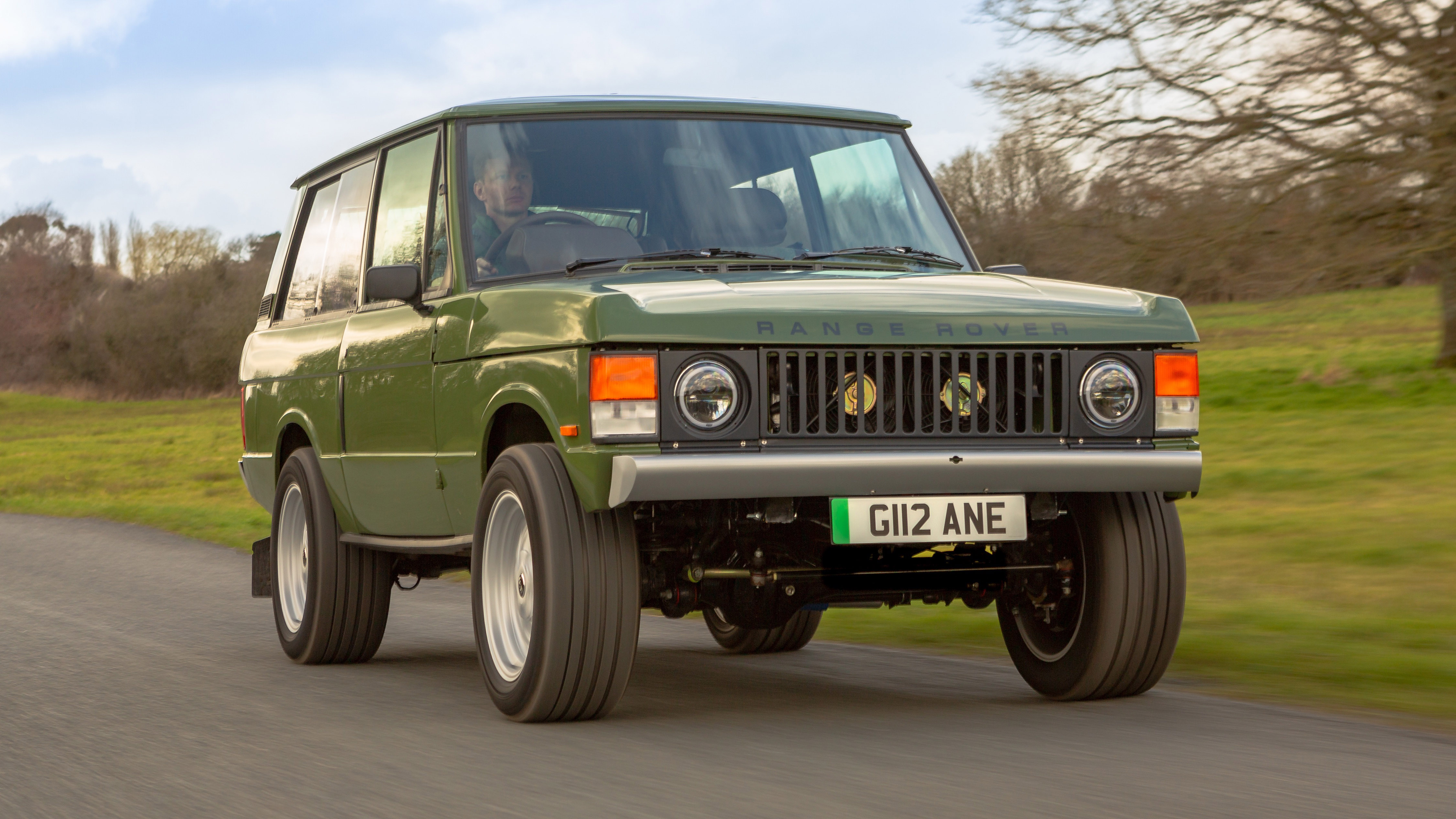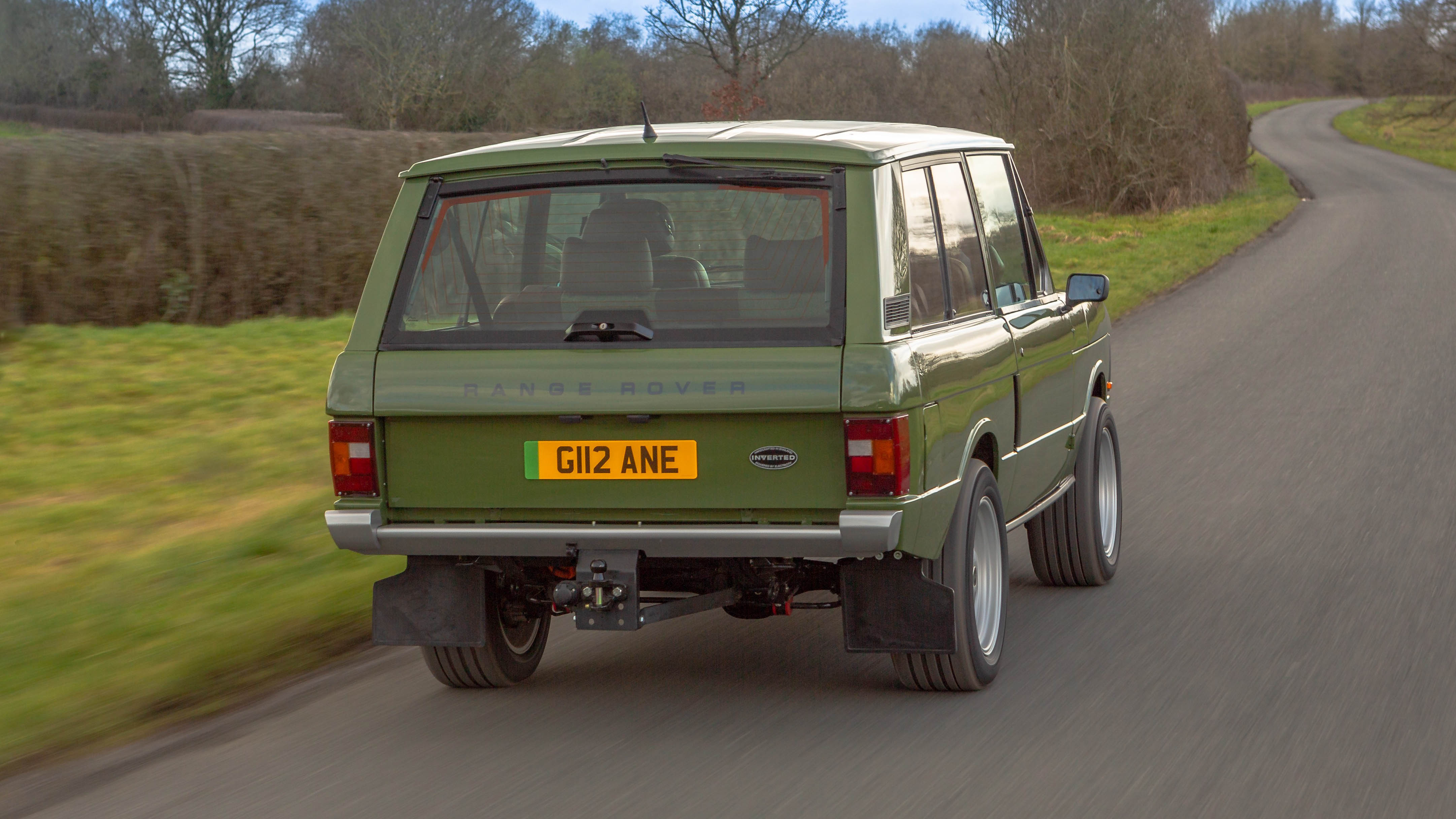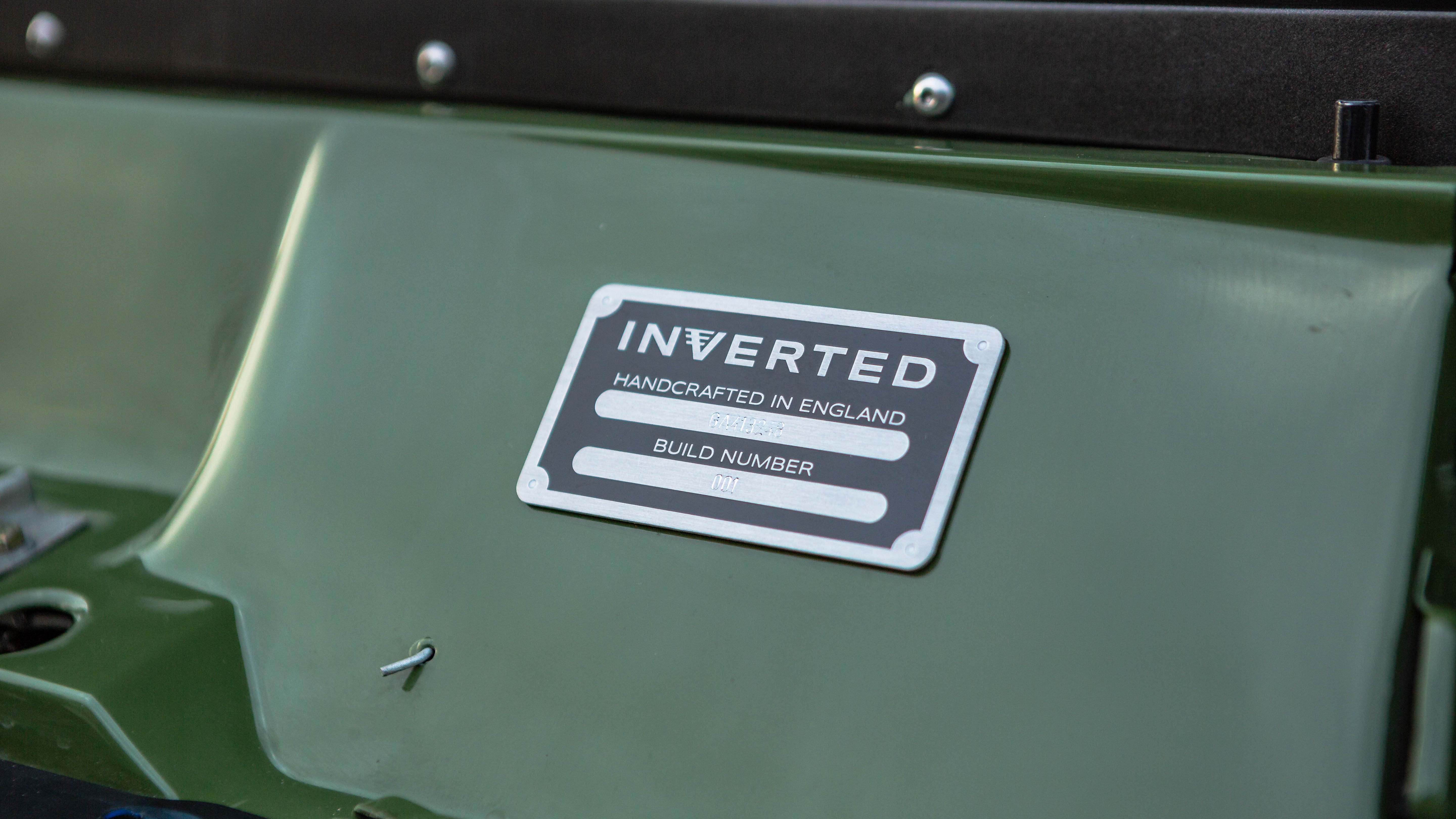
Inverted Range Rover review: this Classic has 450bhp... and is Tesla-powered
£270,000 when new
That looks rather lovely…
Doesn’t it just. It’s hard not to drive a Range Rover Classic with a smile on your face these days, and that smile gets a little bit wider when you realise that it’s very unlikely to break down.
An old Range Rover not breaking down? Surely not?
Well, this isn’t really an old Range Rover anymore. It’s the work of a new British firm called Inverted, and the whole thing starts with a complete back-to-bare-metal restoration of a two-door Classic. You could also go for a four-door, or if you’re feeling really brave an Octopussy-style convertible, but what you see here is the prototype. Numero uno.
It should be a little more reliable than standard because during said restoration the engine, gearbox, fuel tank and lots of other oily bits are ripped out and replaced with an electric powertrain. Not just any electric powertrain either (although the EV donor world is your oyster if you buy one of these), because this Rangie is powered by a 450bhp Tesla Model S motor.
Good grief. It must be a little bit quick then?
Inverted reckons this reborn Range Rover will now hit 60mph from a standstill in just 5.0 seconds. Crikey. Set off in the normal drive mode and it doesn’t initially feel all that rapid, although the sci-fi sound from the motor does provide a sense of occasion. In this prototype there’s a little bit of pedal travel to get through before the motor kicks in though (that’s because of issues adding in regen), and you actually only get the full 450bhp if you click into sport mode.
For the majority of the time the motor will give you around 80 per cent of the grunt, or in eco mode that drops to 50 per cent. Even so, that is still 225bhp, which is more than enough for the Range Rover to get up and go when you really mash the throttle.
This motor usually drives both of the rear wheels in a Model S, but here it’s rotated 90 degrees and drives each axle through the original permanent 4WD system. That means there’s decent grip, and when you do eventually build up the courage to stick it in sport mode and press the reluctant throttle right to the floor, it takes off like one of Elon’s rockets. Plus, without any engine braking to slow things down when you come off the power, it maintains that speed and offers a kind-of runaway train feeling as you hurtle towards the next corner. It’s remarkably impressive and allows for endless fun watching the reactions of other road users.
What happens when you get to that inevitable corner, though?
Inverted wanted to keep as much of the Range Rover’s original character as possible, and that extends to the way it drives. So, you still get rather heavy and not-all-that-precise steering, but then the suspension setup is completely redesigned.
In fact, you get 25 per cent stiffer springs and Fox shocks with 10 clicks of adjustability. It’s a slightly jarring experience to be in something that feels so much like a classic car but rides on such expensive modern dampers, but it’s all the better for it. This car is set up to be as neutral as possible, but we’d actually go a little softer for more roll in the corners and to try and soak up some of the rattles on a bumpy Brit road.
It stops well too, thanks to new Alcon brakes up front that hide behind the 16-inch, five-spoke wheels. In terms of regen, at the moment your only option is to put it in the off-road drive mode where it switches to full one-pedal driving. We’re told that eco will get a halfway house mode soon though so with a little bit of regen every time you lift off the throttle.
How far will it go on a single charge?
“We get a lot of questions about why the range isn’t the same as a Model S,” says Inverted founder Harry Millington. “The answer is it looks like a brick and you’re still running 4WD through the old diffs, so you lose a bit of efficiency there, but you keep the original feel.”
Top Gear
Newsletter
Thank you for subscribing to our newsletter. Look out for your regular round-up of news, reviews and offers in your inbox.
Get all the latest news, reviews and exclusives, direct to your inbox.
Makes sense. So, with an 80kWh battery pack on board you can reckon on a range of around 200 miles, although it’s worth bearing in mind that there’s only a percentage readout on the dash, so you’ll need to do some quick maths in order to work out your remaining range.
The battery is actually stored in various locations around the car, with nine modules under the bonnet and six in the boot. If you wanted to sacrifice some luggage space you could have even more back there, but Millington reckons that an extra 20kWh wouldn’t actually do that much for the range. Plus, you get 100kW rapid charging anyway, so a 20 to 80 per cent top up only takes 34 minutes.
What’s it like inside?
It’s a bit of a tale of two halves in here at the moment. The seats have been retrimmed in Muirhead leather and Harris Tweed and are brilliantly comfortable, but the aftermarket Sony head unit could be better integrated and some of the new switchgear could feel more premium. This is still the prototype though so we’ll give it the benefit of the doubt. Inverted says it is working on replacing the air conditioning system and as a result some of the vent plastics.
The Sony head unit provides Apple CarPlay/Android Auto connectivity and there’s a reversing camera, a super bassy Focal audio system and USB charge points in the centre console bin.
There’s a whole load more soundproofing too, although you still get plenty of old-school squeaks and rattles coming through into the cabin. It wouldn’t be an old Range Rover without it.
Sounds great! Can I buy one?
Well, if you’ve got £270,000 burning a hole in your pocket at this very moment then go right ahead. Inverted has plans to build a maximum of six conversions every year, and founder Harry Millington tells TG that there’s currently strong interest from two potential customers, both of whom want multiple examples.
Is it worth the cash? That’s hard to judge from the prototype, and your opinion will probably vary depending on how much money you have to drop on a Range Rover Classic. Still, it’s roughly the same price as Overfinch charges for its Heritage Field Edition; a four-door Classic with a 430bhp 6.2-litre Chevy V8 under the bonnet. Time to pick your fighter…
Featured

Trending this week
- Car Review
BMW 1 Series






